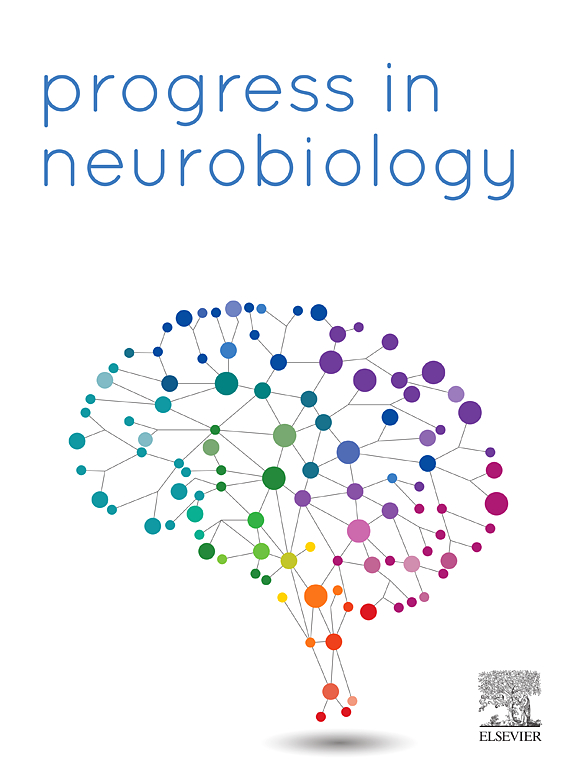脓毒症对阿尔茨海默病病理和神经炎症的时间影响
IF 6.1
2区 医学
Q1 NEUROSCIENCES
引用次数: 0
摘要
流行病学证据显示败血症存活与痴呆风险增加之间存在关联,尤其是阿尔茨海默病(AD)。矛盾的是,人口研究表明,女性不太容易患败血症,但更容易患败血症后痴呆。在这里,我们通过使用AD-淀粉样变模型(TgCRND8)和它们的野生型窝代,研究了败血症在AD背景下的时间影响,并评估了雄性和雌性小鼠败血症后7天和3个月的结果。恢复7天后,ad模型小鼠的小胶质细胞和星形胶质细胞对全身免疫刺激有很大的折射性。值得注意的是,雌性ad模型小鼠此时积累了更高的海马淀粉样蛋白- β (Aβ)负担和上调的ad型转录组特征。另一方面,雄性ad模型小鼠未见Aβ变化。此时,野生型感染后的雄性,而不是雌性,表现出强大的星形细胞增生,并伴有名义上的小胶质细胞增生。脓毒症后3个月,野生型女性的小胶质瘤特异性升高,表明中枢免疫反应延长。此时,雄性和雌性ad模型小鼠的Aβ和焦虑指数均升高。基因网络分析显示,雌性的免疫反应更强,而雄性的反应与雌激素受体(ESR)信号有关,在败血性ad模型雄性的大脑中,ERα蛋白上调。总之,我们的数据强调了脓毒症后神经炎症中的性别二态时间反应,ESR信号在男性中起关键作用,而a β负荷在男性和女性中都受到相似的影响。本文章由计算机程序翻译,如有差异,请以英文原文为准。
Temporal impact of sepsis on Alzheimer's disease pathology and neuroinflammation
Epidemiological evidence has revealed an associative link between sepsis survivorship and increased risk of dementia, particularly Alzheimer's disease (AD). Paradoxically, population studies show females are less susceptible to sepsis but more vulnerable to post-sepsis dementia. Here, we examined the temporal impacts of sepsis in the context of AD by using an AD-amyloidosis model (TgCRND8) and their wild-type littermates and assessing outcomes at 7 days and 3 months post-sepsis in male and female mice. Following 7-days recovery, the microglia and astrocytes in AD-model mice were largely refractile to the systemic immune stimuli. Notably, the female AD-model mice accumulated higher hippocampal amyloid-beta (Aβ) burden and upregulated AD-type transcriptomic signature at this time. On the other hand, male AD-model mice showed no Aβ changes. At this time, the wild-type post-septic males, but not females, displayed robust astrocytosis, with nominal microgliosis. By 3 months post-sepsis, microgliosis was specifically elevated in wild-type females, indicating a prolonged central immune response. At this time, both male and female AD-model mice showed exacerbated Aβ and anxiety indices. Gene network analysis revealed a stronger immune response in females, while the male response was linked to estrogen receptor (ESR) signaling, with ERα protein upregulated in the brains of post-septic AD-model males. Together, our data highlights a sex-dimorphic temporal response in post-sepsis neuroinflammation, with ESR signaling playing a key role in males, while Aβ burden is affected similarly in both males and females.
求助全文
通过发布文献求助,成功后即可免费获取论文全文。
去求助
来源期刊

Progress in Neurobiology
医学-神经科学
CiteScore
12.80
自引率
1.50%
发文量
107
审稿时长
33 days
期刊介绍:
Progress in Neurobiology is an international journal that publishes groundbreaking original research, comprehensive review articles and opinion pieces written by leading researchers. The journal welcomes contributions from the broad field of neuroscience that apply neurophysiological, biochemical, pharmacological, molecular biological, anatomical, computational and behavioral analyses to problems of molecular, cellular, developmental, systems, and clinical neuroscience.
 求助内容:
求助内容: 应助结果提醒方式:
应助结果提醒方式:


